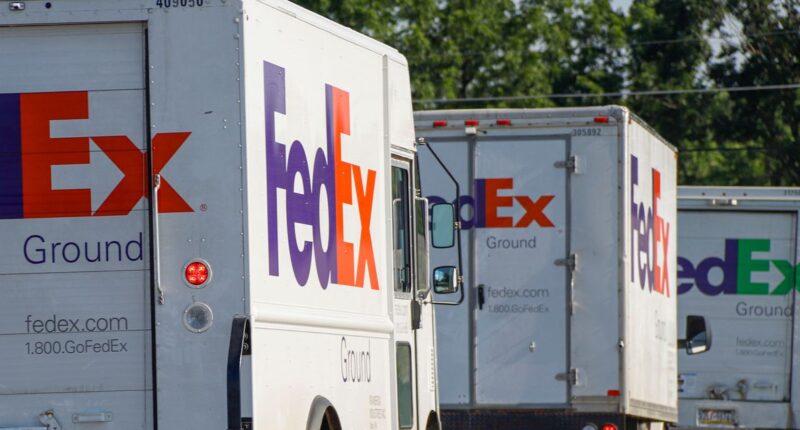
Companies are expected to tap the brakes on capital investments this year as they assess the risk of a downturn and contend with higher financing costs.
A slowdown in capital spending—meaning investments in property, equipment and technology—would mark a shift from the past two years, when companies after the initial shock of the pandemic took advantage of large cash piles and low interest rates to spend heavily on distribution centers, technology upgrades and other big-ticket items.
Among the 464 companies in the S&P 500 that reported capital expenditures for the third quarter through Jan. 13, capital spending rose 23% from a year earlier, to $235.8 billion, according to S&P Global Market Intelligence, a financial data company. During the prior-year period, capital expenditures among the same companies rose 21%, to $191.9 billion. Higher construction and input costs have also inflated capital budgets.
But the prospect of a downturn is making companies more cautious about overextending themselves given possible revenue declines, advisers said. Companies in the S&P 500 are projected to boost capital spending by an estimated 6% in 2023, compared with an estimated 20% increase in 2022, according to an analysis from advisory firm Ernst & Young, using data from FactSet. Capital spending in 2021 rose by 9% compared with 2020, the first year of the pandemic, EY said.
After two years of spending heavily, some companies want to take a pause to digest the investments they’ve made, advisers said. “Let’s take stock of what we’ve done, based on what we’ve spent,” said Hardik Sheth, a partner and associate director at advisory firm Boston Consulting Group, describing the thinking of many CFOs.
Companies are grappling with ongoing uncertainty surrounding the future pace of interest-rate hikes and inflation, as well as geopolitical risks, including those stemming from Russia’s war on Ukraine. “I think there’s a legitimate concern regarding the concentration of risks that are not manageable at the individual company level,” said Andrea Guerzoni, global vice chair of strategy and transactions at EY.
FedEx Corp. last month lowered its capital spending forecast for the current fiscal year by $400 million, to $5.9 billion. The delivery company is facing weaker demand for packages after benefiting from a surge in e-commerce early on during the pandemic. During the quarter ended Nov. 30, revenue declined 3%, to $22.8 billion. Profit fell 32% over the same period, to $788 million.
At the beginning of its fiscal year in June, Memphis, Tenn.-based FedEx said it expected to spend about $6.8 billion on capital projects, but cut that forecast to $6.3 billion in September. In particular, the company plans to spend less on its ground transportation division. “The high rate of growth, particularly at ground over the past few years—that’s in the rearview mirror,” Chief Financial Officer Mike Lenz said during a Dec. 20 earnings call. The company declined to make Mr. Lenz available for an interview.
Like many beneficiaries of the pandemic, FedEx made big investments with a view that strong, early-pandemic demand would continue, but that didn’t fully come to fruition, said Jonathan Chappell, senior managing director at investment firm Evercore Inc. Other transportation companies are also scaling back, though not to the same degree, he said.
FedEx continues to move forward with an expansion of its flagship Memphis terminal, but other planned investments in facilities are being suspended indefinitely or reassessed, Mr. Chappell said.
Other companies facing weaker customer demand are also pulling back their capex investments. Used-car retailer CarMax Inc. said in December it expects to spend $450 million on capex during its current fiscal year ending Feb. 28, rather than the $500 million it initially planned. The company’s sales plunged late last year as rising rates make car purchases unaffordable for many potential buyers. “We adjusted capex in order to provide ourselves more flexibility in the current environment,” a company spokesman said.
Additionally, semiconductor company Micron Technology Inc. last month said it is forecasting capex of between $7 billion and $7.5 billion during its 2023 fiscal year, down from prior estimates of $8 billion. The company, which makes computer-memory chips, is feeling the pinch of weakening demand for electronics.
Many companies are expected to remain cautious on capex until the second half of the year, when there could be more certainty about a potential recession and other macroeconomic factors, according to Boston Consulting Group’s Mr. Sheth.
The aggressive pace of interest-rate increases over the past year has prompted some finance chiefs to revise their capital investment plans. Approximately 30% of CFOs plan to reduce planned capital spending due to higher interest rates, according to a survey from Duke University’s Fuqua School of Business and the Federal Reserve Banks of Richmond and Atlanta. The survey was conducted between Nov. 14 and Dec. 2.
An additional 14% of respondents said they would pull back if the Fed boosted its benchmark federal-funds rate by an additional 1.5 percentage points. The remainder said they don’t finance their capital spending plans through borrowing, or their borrowing isn’t sensitive to changes in interest rates. The CFO survey included 312 responses from what Duke describes as a representative sample of companies across the country, including large, small, publicly traded and private firms.
The Federal Reserve last month raised its benchmark federal-funds rate to a 15-year high of between 4.25% and 4.5%. It also signaled plans to continue lifting rates through the spring in an effort to combat inflation. The Fed’s next meeting is scheduled to conclude on Feb. 1.
At the same time, however, companies benefiting from the current economic environment are ramping up their spending. Conagra Brands Inc., the Chicago-based food manufacturer, plans to spend over 4% of its sales on capital projects over the next two years, CFO David Marberger said. After that, the company expects to slow its pace of investment to about 3.5% to 4% of sales. During the quarter ended Nov. 27, net sales rose 8%, to $3.3 billion.
Conagra has recently focused on adding capacity across its supply chain. Last June, the company completed a $320 million facility for its Birds Eye frozen vegetables brand in Waseca, Minn. It is also boosting capacity in its facilities to meet increasing demand for its Slim Jim meat snacks, Mr. Marberger said. “The best investment you can make in capex is capacity,” he said.
Additionally, the company is investing in new technology for its plants. Its new Birds Eye facility, for instance, was built with technology that gives managers immediate information on their iPads about any disruptions or slowdowns in their production lines. “If something goes down, they know why, and they can troubleshoot quicker,” Mr. Marberger said.
Conagra is piloting the same technology at an additional four facilities, and will assess the potential efficiency gains before making similar investments at other plants, Mr. Marberger said.
Write to Kristin Broughton at [email protected]
Copyright ©2022 Dow Jones & Company, Inc. All Rights Reserved. 87990cbe856818d5eddac44c7b1cdeb8








